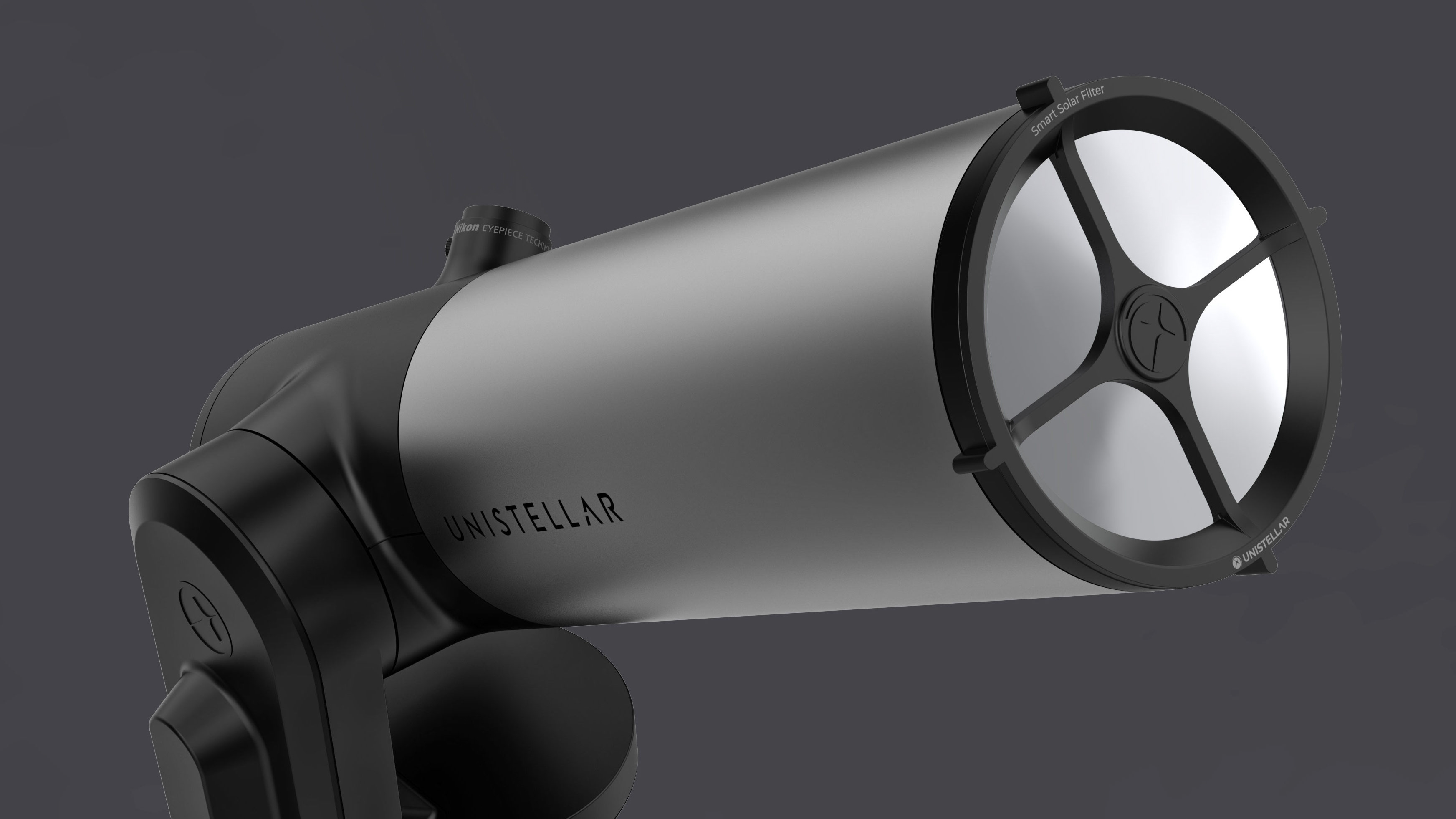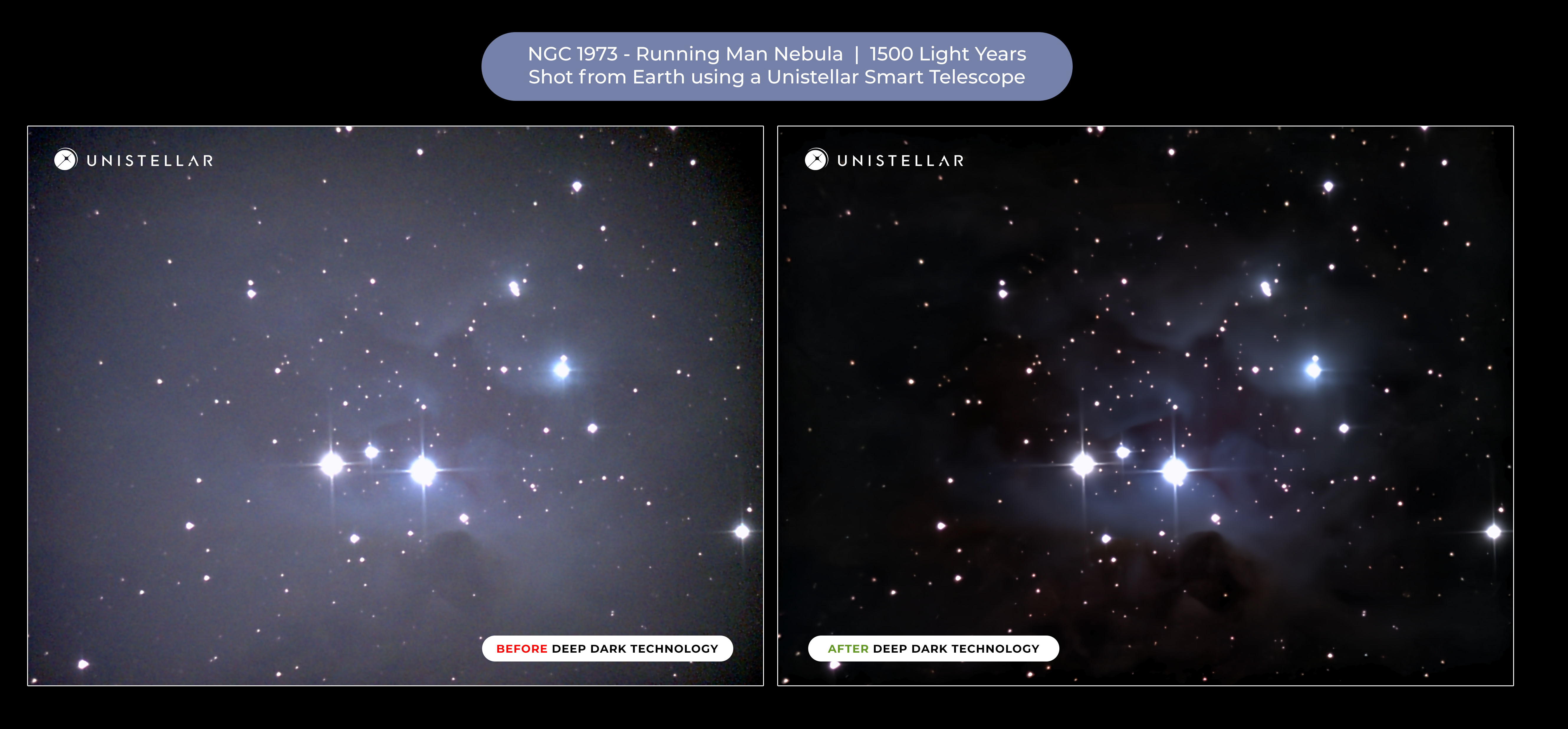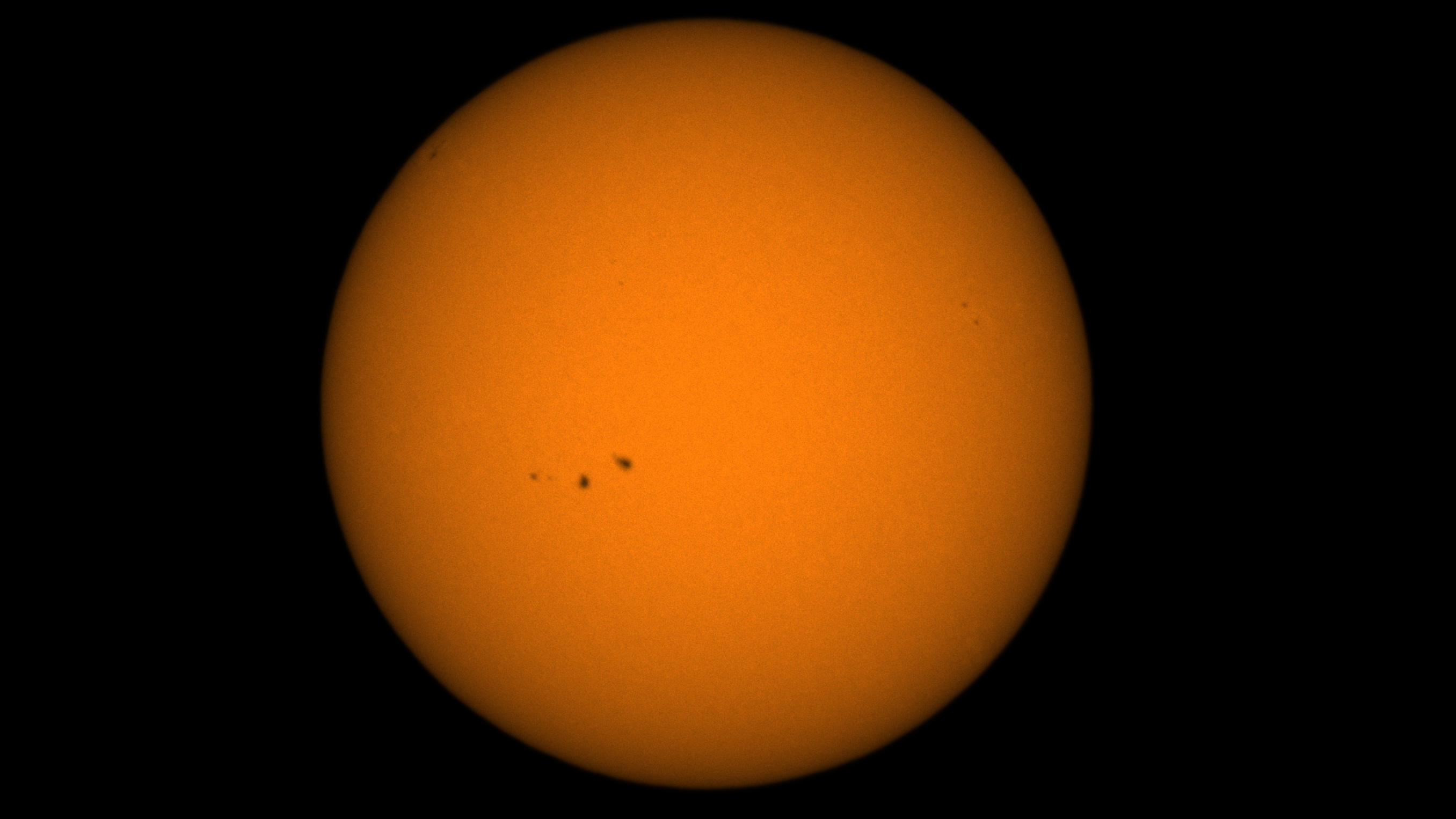Nikon and Unistellar unveil ‘Deep Dark’ tech and a new solar filter for smart telescopes ahead of upcoming eclipse
eVscope smart telescopes get an optional solar filter in time for two solar eclipses in North America

Smart telescope company Unistellar has unveiled new technology to fight light pollution as well as a new solar filter for observing the sun.
Available now as a firmware update for all Unistellar products – the eVscope, eVscope 2, eQuinox and eQuinox 2 – the new Deep Dark Technology is an attempt to automatically eliminate interference caused by city lights even in very bright urban areas to create black backgrounds to celestial objects. A recent international study revealed that sky brightness is increasing in the US and Europe by an average of 10% per year, making observing faint objects such as nebulae and galaxies much more difficult using optical telescopes.

Read: Unistellar eQuinox 2 smart telescope review
The smart telescopes produced by Unistellar – some of which use electronic eyepieces made by Nikon, which is also an investor – are not optical, instead using camera sensors that take long exposure images and stack them in real-time to reduce noise and improve clarity.
The new algorithms – which automatically download in the Unistellar app and automatically update the firmware in the products – are a direct response to the large number of images of the night sky captured by users of Unistellar telescopes. “Light pollution is not flat – it has variations – and while our former treatment could roughly identify a variation, it was a standardized simple shape,” said Laurent Marfisi, co-founder and CEO of Unistellar, told Digital Camera World in an interview. “Now we have a smarter algorithm that is able to accurately map the variation of luminosity in images – and remove it more accurately.”
Promising deep darks and plenty more dynamic range for the signal from faint celestial objects, the new technology also enables the telescopes to be used sooner after sunset. “Twilight is similar to light pollution, but it depends on the twilight you're talking about,” said Marfisi. “We recommend users can observe in nautical twilight – they don’t have to wait for astronomical darkness.”
For the complete opposite – observing the sun – Unistellar has also announced a custom-made solar filter that transmits only 1/100,000th of the sun’s light. Selling for $249/£219, it’s guaranteed delivery in September. That’s crucial because on October 14, 2023, a ‘ring of fire’ annular solar eclipse will be visible across the southwest US, with the rest of North America experiencing a big partial solar eclipse.
Get the Digital Camera World Newsletter
The best camera deals, reviews, product advice, and unmissable photography news, direct to your inbox!
Solar eclipses are not something Unistellar telescopes have been able to observe before, though Unistellar’s real smart telescope company Vaonis does enable the feature on its Vespera Observation Station.

“We call it a Smart Solar Filter because it’s a hybrid of software and hardware,” said Marfisi. “The hardware is not revolutionary – it’s just a normal solar filter – but we developed it together with software that allows people to easily and safely point at the sun automatically.” Since images show up only in an electric eyepiece and in the Unistellar app for smartphones and tablets it’s a totally safe way of being solar eclipses.
At night the telescopes align automatically to the stars using plate-solving technology, so Unistellar had to develop a new orientation technology. “It uses brightness gradients in the sky to find the brightest spot – you just point the telescope, with the filter on, roughly where the sun is and it will automatically get to the brightest spot in the sky, which is the sun,” said Marfisi.
The filter also comes in good time for the next total solar eclipse, which will cross Mexico, 14 US states, and southeastern Canada on April 8, 2024 – the last such event across the continent until 2045.
Now is a good time to study the sun even without a solar eclipse. It’s currently close to solar maximum – a peak in activity that occurs every nine to 14 years – which means a lot of sunspots and solar activity can be seen on its surface.
Read:
Where to photograph 2023’s ‘ring of fire’ annular solar eclipse in America

Jamie has been writing about photography, astronomy, astro-tourism and astrophotography for over 15 years, producing content for Forbes, Space.com, Live Science, Techradar, T3, BBC Wildlife, Science Focus, Sky & Telescope, BBC Sky At Night, South China Morning Post, The Guardian, The Telegraph and Travel+Leisure.
As the editor for When Is The Next Eclipse, he has a wealth of experience, expertise and enthusiasm for astrophotography, from capturing the moon and meteor showers to solar and lunar eclipses.
He also brings a great deal of knowledge on action cameras, 360 cameras, AI cameras, camera backpacks, telescopes, gimbals, tripods and all manner of photography equipment.
